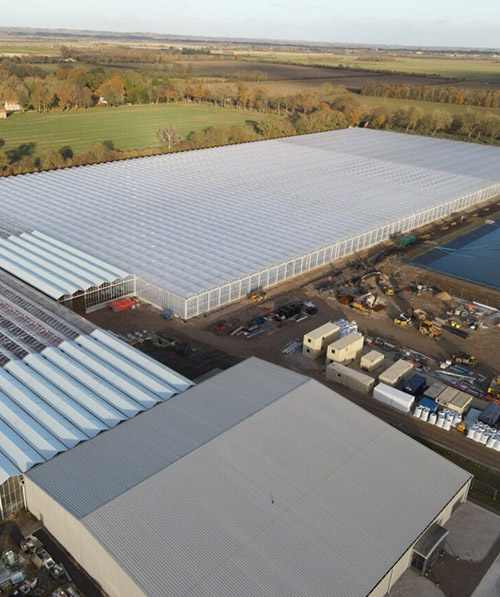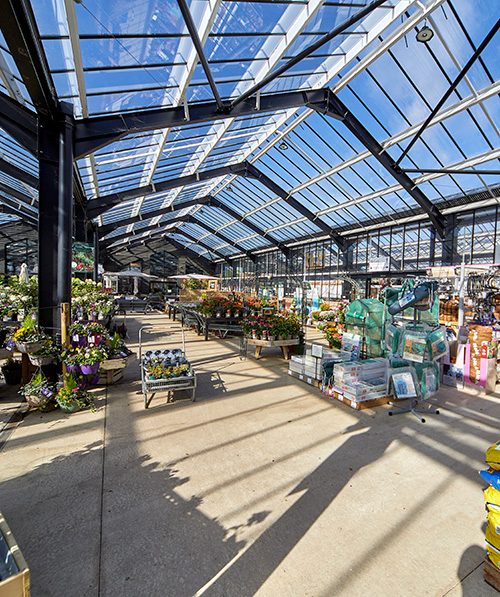Call Today 01430 449440
Why we are proud our structural steelwork and welding conforms to Execution Class 3
By Simon Goff, Cambridge HOK Factory Manager
Welding and the factory production of steelwork is a complex operation, requiring strict validation to ensure welding processes and procedures are correctly followed.
As an industry-leading horticultural construction specialist, Cambridge HOK is proud of its highly-detailed policies and procedures relating to our manufacture of structural steelwork.
Approved Factory Production Control Systems
To maintain safety and quality standards, effective welding and Factory Production Control systems are in place which meet the requirements of BS EN 1090 2009 & BS EN 1090 -2:2018.
We are pleased to possess a Certificate of Factory Production Control (FPC), issued by the Steel Construction Certification Scheme, which confirms we are qualified to produce ‘load bearing and welded structural steel components up to EXC 3’ – in accordance with BS EN 1090-2-2018 and the UK Designated Standard BS EN 1090 - 1:2009+A1:2011.
All factory control systems are subject to an annual third-party assessment and continued surveillance, so that quality is always upheld.
Our welding standards & codes
To ensure our welding processes remain validated, we must abide by several strict procedures.
- Define criteria for review and approval of processes
- Ensure equipment is approved
- Maintain and calibrate equipment
- Ensure qualification of personnel
- Clearly define methods and procedures
- Define inspection and test procedures
- Record & demonstrate compliance with planned arrangements
We are honoured to hold a Welding Certificate, issued by the Steel Construction Certification Scheme, which permits us to operate at Execution Class 3, according to BS EN 1090-2-2018.
Not only does this allow us to carry out manual arc welding and MAG welding with solid wire electrode, it means we are permitted to construct supporting structures made of steel up to strength class S700 and structural components made of aluminium alloys.
Basically, most types of building which require large or heavy structural steelwork (except stadiums). In practice, typical examples might be a road or railway bridge, crane tracks or a building with more than 15 floors.
To provide this execution class, we possess a number of welding codes:
- BS EN 1090-1 Execution of steel structures and aluminium structures
- BS EN ISO 3834 Quality requirements for fusion welding of metallic materials
- BS EN ISO 14731 2006 Welding Coordination – Tasks & Responsibilities
- BS EN 9606 Testing of Welders
Maintaining quality through in-process inspections
Throughout all welding operations, certain essential parameters and procedures must be monitored.
To ensure 100% compliance, all welds must be visually inspected by a qualified welding operator.
The weld inspection has to be recorded on the fabrication’s bill of materials (BOM).
A visual inspection must also be conducted in accordance with the National Structural Steelwork specification for Building Construction CE Edition.
Final inspections & welding quality records
In accordance with BS EN 1090-2 table 24, a sample of welded columns must be subjected to a magnetic particle test / non-destructive test (NDT).
NDT tests are recorded on a test report detailing and include:
- The item(s) tested
- Project details
- Method of test
- Quantity
- Welder identification
- Accept or reject
As part of our commitment to quality construction, Cambridge HOK keeps a wide variety of welding quality records.
Those that must be maintained for a minimum of 5 years include:
- Welding Procedure Specifications WPSs
- Welder qualification certificates and records
- NDT Test reports
- MPI rejection reports
- Job fabrication BOM
- Maintenance records
- Calibration of welding equipment records
- Welding consumable certificates of conformity
Should an item be rejected, an NCR report is raised to detail the nature of the failure and location of the non-conforming weld. We also detail the corrective action taken to rectify the non-conformance and ensure future approval.
Although most of the glasshouses and agricultural construction projects we work on do not require us to operate at Execution Class 3, we believe it is a mark of quality which sets us apart.
Each part we weld is manufactured by us and 100% traceable throughout its entire lifecycle, providing quality assurance for our clients.
If you’re a grower who’d like to benefit from these specialist skills and experience, please get in touch – we’d love to hear about your project!

Call us to speak to a member of our team or complete the enquiry form and we will get back to you
- 01430 449440
- [email protected]
- Wallingfen Park
236 Main Road
Newport, Brough
East Yorkshire
HU15 2RH












